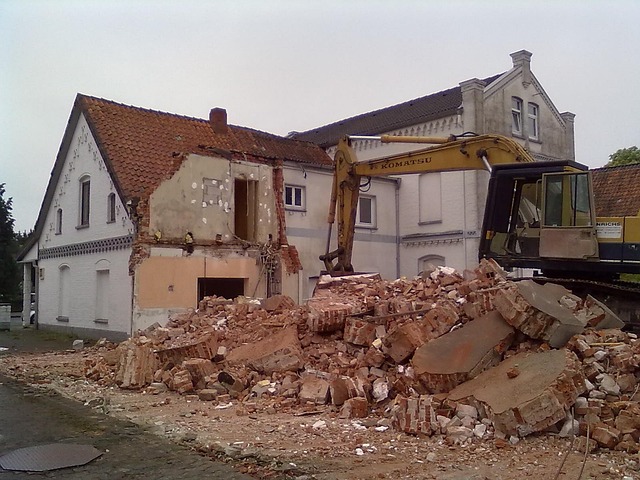Different Types of Building Demolition Process and Methods
October 10, 2024

Different Types of Building Demolition Process and Methods
A building demolition method may include implosion, interior or soft strip demolition, wrecking ball demolition, high-reach arm demolition, pressure bursting, etc. A suitable demolition method depends on the building's structure and settings. If you are looking to demolish a building, you should keep reading. We shall discuss different demolition processes and methods to help you decide on the best process for demolishing your building. We shall also discuss the limitations of varying demolition methods.
Implosion
The most effective and attention-grabbing demolition method is implosion. This technique is used in multi-story buildings and may take a minute or two to demolish them. It involves attaching explosives to the building's supporting points and systematically conducting the explosion. This process is effective for multi-story buildings, but careful planning is mandatory. Expert engineers can adequately analyse the building's structure and place explosive charges at the right points, making the process effective. However, the process will create a large amount of debris and dust in the surrounding areas. The nearest residents may be asked to clear the area for safety reasons. Large water spray machines are often used to control dust particles generated from the explosion.
Interior or soft strip demolition
Contrary to implosion, the interior or soft strip demolition process involves the demolishing of interior parts of a building. It does not include explosions, as demolition focuses on preserving the building structure. The interior demolition process involves a mixture of manual and mechanical methods. Ideally, the demolition contractor takes proper safety measures to control the spread of dust particles during the process. Proper debris collection tools are also utilised during the process.
Wrecking ball demolition
The demolition method's name is fascinating - you guessed it right - it involves a ball to demolish the building. However, the giant wrecking ball weighs thousands of pounds. An expert operator swings or drops the ball from a massive crane onto the building. The momentum of the large metal ball is used to break through the building's concrete structure. The demolition process may have several downsides. First, it is noisy and produces dust clouds. Second, it can only be used in specific places; it requires a spacious place. Finally, if an expert operator does not handle it, it may create significant risk for on-site workers and surrounding buildings.
High-reach arm demolition
Another variation of mechanical demolition is high-reach arm demolition. In this process, a mechanical arm, such as an excavator, is used to tear down buildings from top to bottom, clearing them section by section. Unlike wrecking ball, high-reach arm demolition is much safer and produces less debris. Workers can carefully clear debris from the site, helping in careful debris management. High-reach arm demolition is more effective for buildings with more than 60 feet in height.
Pressure bursting demolition
The pressure-bursting demolition process uses hydraulic or chemical pressure to break a concrete structure. Multiple holes are drilled in the concrete, and then hydraulic or chemical pressure is inserted to develop cracks in the structure. Later, workers used manual force to tear down concrete structures. The pressure-bursting demolition method does not produce dust or create noise pollution. It is effective for demolishing small buildings but not practical for large ones.
Manual demolition
Workers use jackhammers, sledgehammers, picks, crowbars, etc., to tear down a building's partial or complete structure in a manual demolition process. Large and heavy equipment is not used in the demolition process. One of the benefits of the process is maintaining continuous control over it. However, it is time-consuming and ineffective to demolish large buildings. It can be suitable for partial demolition or small-scale demolition activities. The manual demolition process may also be risky for workers if not carefully done.
Conclusion
If you have read carefully, the above discussion may be sufficient to help you understand which type of demolition method best suits your needs. The explosion method uses careful explosive placement to tear down large buildings. On the other hand, large mechanical and heavy-duty machines are often used to tear down medium-height buildings. The wrecking ball method may be used for buildings under 60 feet tall. No matter the type of demolition method used to tear down your old building, it needs to be carefully monitored by demolition experts. At Demolition Contractors London, our in-house demolition experts can offer you the best service across the UK. Contact us today for further information.
Recent Blogs
- On-site Concrete Crushing: A Sustainable Way to Manage Concrete Waste
- What Is Hydrodemolition and Why Is It Gaining Popularity in the UK?
- Why You Need an Asbestos Survey Before Demolishing a Building in the UK
- Managing Noise and Dust: Environmental Considerations in Demolition
- Top 7 Signs to Know It's Time to Demolish Your Old Building